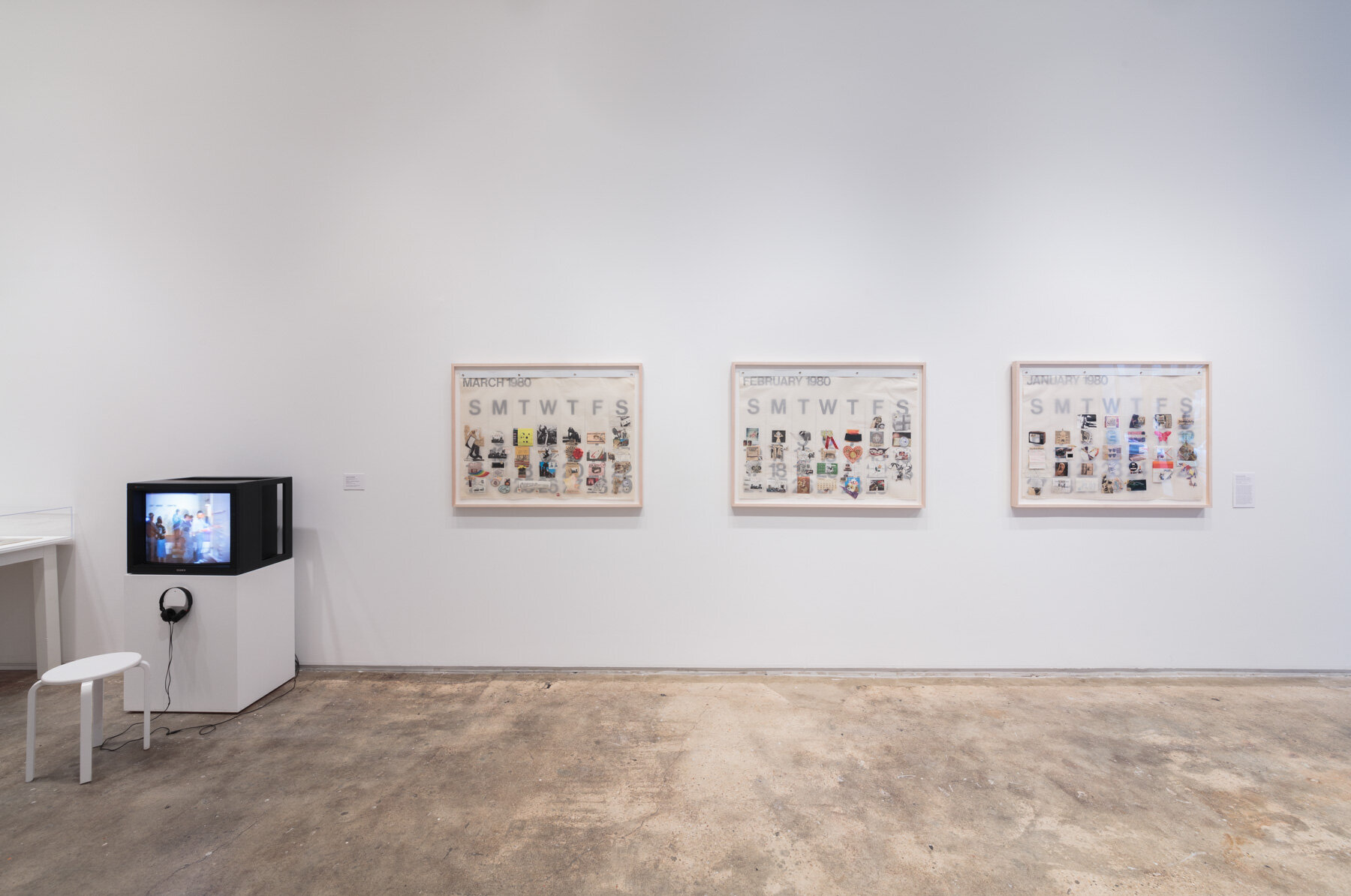Sonya Rapoport, Biorhythm Calendar: March, 1980, 1980; Biorhythm Calendar: February, 1980, 1980; and Biorhythm Calendar: January, 1980, 1980. Mixed media collages on continuous feed computer vellum and found calendars. Courtesy of the Sonya Rapoport Legacy Trust. Installed in Refiguring the Future, Hunter College Art Galleries, 2019. Photo by Stan Narten.
Sonya Rapoport
Sonya Rapoport’s Biorhythm works (1980–84) are data-oriented yet playful exploration of the human body as computer. The work was prompted by Rapoport’s interest in Biorhythm Theory, which gained popularity in the late 1970s. The theory posits the existence of three different biorhythm cycles, each influenced by an aspect of human behavior: one cycle influences physical behavior; one cycle influences emotions; and one cycle influences intellectual functions. In anticipation of the Quantified Self—self-knowledge through self-tracking—Rapoport used a commercially available biorhythm kit to predict and record her daily physical, emotional, and cognitive cycles throughout the year 1980. On large calendars, she made daily collages from the ephemera of her everyday life and art practice, creating an autobiographical portrait.
Rapoport’s meticulous process of gathering data and research on the origins of Biorhythm Theory led her to conclude that her cycle was not predicted accurately using this method, exposing the potential failures and biases of computerized data collection. In the annotated plotter print Biorhythm Sheet 1: Identical Prediction/Action Days, 1981, she charted her data on a spiral graph, circling the thirteen days that the biorhythm prediction matched her “actions.” In an artist’s book, she graphed her own biorhythm data in comparison to the computerized predictions, which appear as sine waves. Also included in Refiguring the Future is video documentation of the Biorhythm Audience Participation Performance (Works Gallery, San Jose, 1983) and The Computer Says I Feel… (San Francisco Arts Commission Gallery, 1984).
Sonya Rapoport (1923–2015) is a conceptual artist best known for appropriating the aesthetics of science and digital media. Her work is characterized by groundbreaking experimentation with computers and data collection; collaboration with eminent scientists and experts in the humanities; and a profound feminist mission marked by strategic forays into male-dominated fields. Rapoport had an active role in MIT Press’ art, science, and technology journal Leonardo. She received her MA in painting from University of California, Berkeley in 1949, and was among the first women to do so. Rapoport’s work has been included in numerous exhibitions, including the Whitney Biennial, New York, 2006; Bienal de Arte, Buenos Aires, 2002; and Documenta 8, Kassel, 1987. Rapoport’s work was the subject of late-career retrospective exhibitions at KALA Art Institute, Berkeley, 2011; Mills College Art Museum, Oakland, 2012; and the Fresno Art Museum, Fresno, CA, 2013. Her archives are preserved in the Bancroft Library at the University of California, Berkeley.

